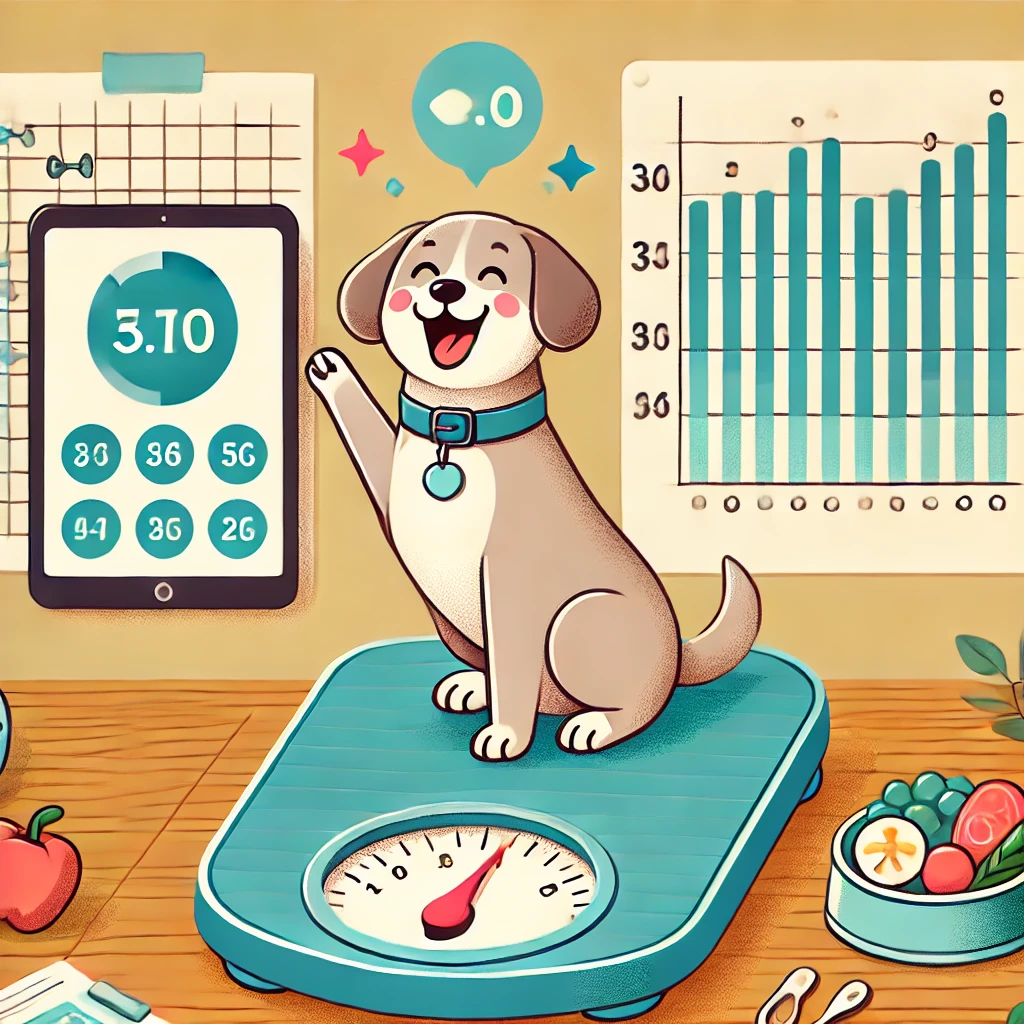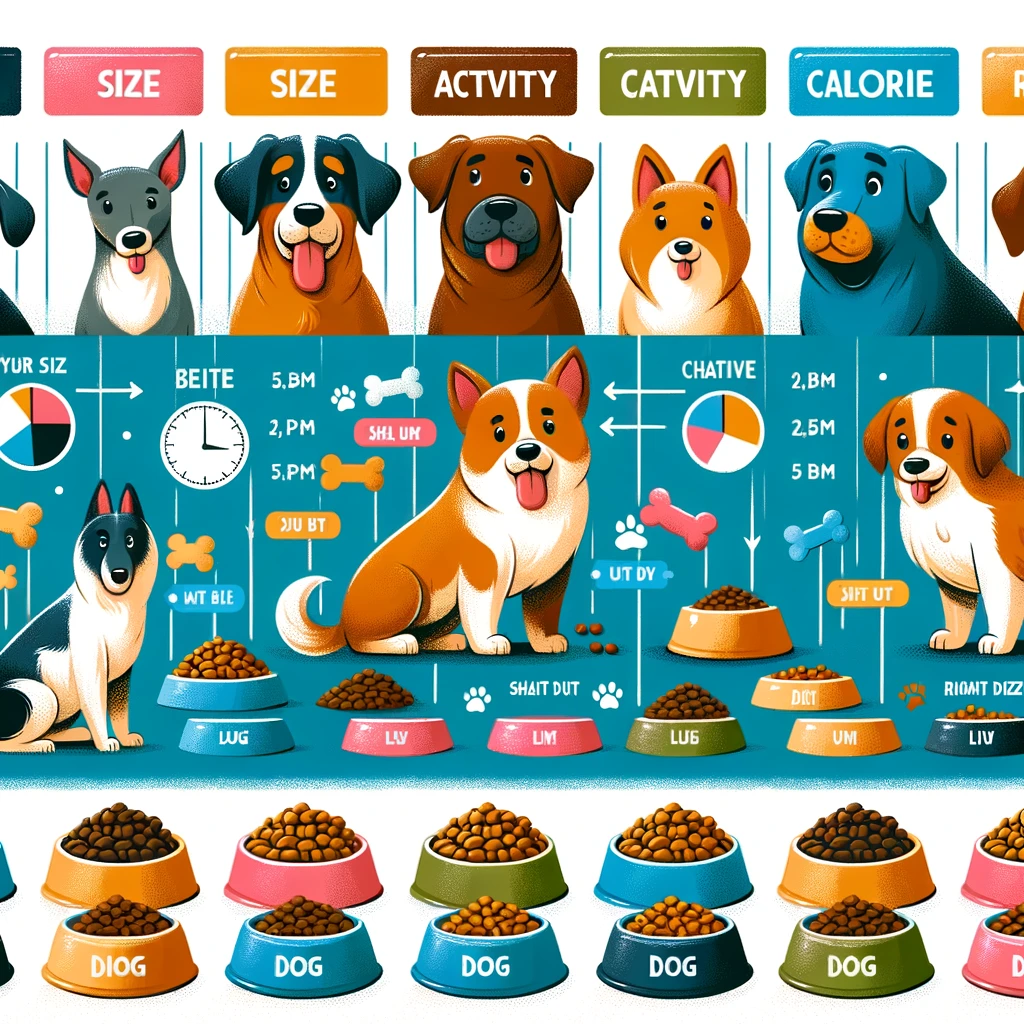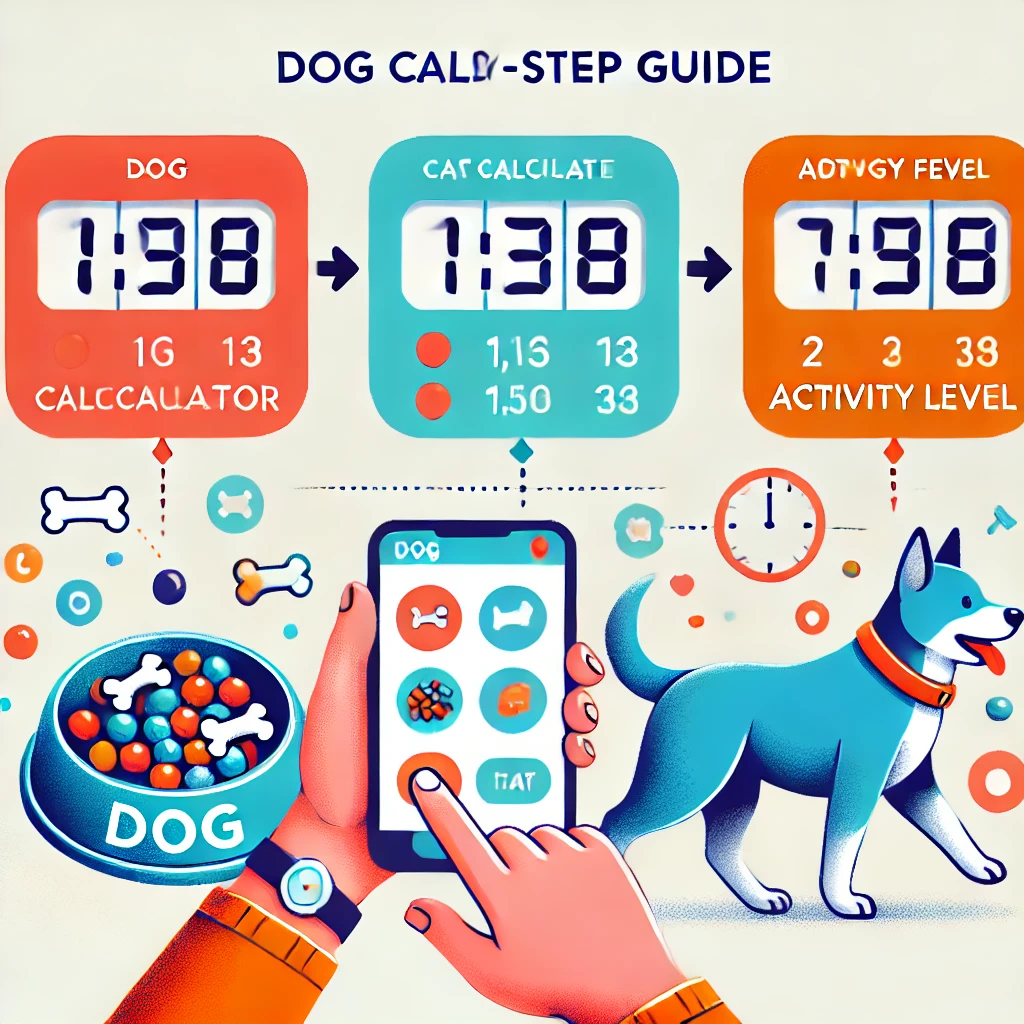Table of Contents
Dog Calorie Calculator: How Much Should Your Dog Eat in 2024?
Introduction:
Let’s face it—figuring out how much to feed your dog can feel like solving a math problem in high school. Whether you’re feeding a hyperactive Husky or a couch-loving Chihuahua, getting your dog’s calorie intake just right is key to their health and happiness. Enter the dog calorie calculator—your new best friend in pet parenting!
This tool takes the guesswork out of feeding by helping you determine exactly how many calories your furry friend needs based on their breed, age, size, and activity level. Imagine your dog finally getting meals that are just the right size—not too much, not too little. Let’s dive in and make mealtime as perfect as your pup deserves!
What Is a Dog Calorie Calculator and Why Is It Important?
If your dog could talk, they’d probably tell you, “Feed me more!” But as pet parents, we know it’s not that simple. A dog calorie calculator is a tool that helps you figure out your dog’s daily calorie needs. It’s like having a personalized meal plan for your pet.
Why It Matters:
- Avoids overfeeding or underfeeding, which can lead to obesity or malnourishment.
- Helps maintain a healthy weight, improving lifespan and quality of life.
- Simplifies feeding decisions, especially if you’re switching foods or managing medical conditions.
Imagine walking into a dog food aisle confidently, knowing exactly what your pup needs. A calorie calculator empowers you to make informed choices, so your dog’s wagging tail is all joy—not extra pounds.

How to Calculate Your Dog’s Daily Calorie Needs
Using a dog calorie calculator is surprisingly simple. Here’s how you can do it in three easy steps:
- Determine Resting Energy Requirement (RER):
- RER = 70 × (dog’s weight in kg)^0.75.
- For example, a 10 kg dog needs about 400 calories/day as a baseline.
- Factor in Activity Level:
- Multiply the RER by an activity factor:
- Sedentary dogs: 1.2
- Active dogs: 1.6
- Working dogs: 2.0 or higher.
- Multiply the RER by an activity factor:
- Adjust for Special Cases:
- Puppies: Multiply RER by 2-3 times.
- Senior dogs or spayed/neutered dogs: Reduce by 10-20%.
Example: A 20 kg active Labrador would need around 1,100-1,200 calories per day. Easy peasy, right?
Factors That Influence a Dog’s Calorie Needs
Every dog is unique, and several factors can sway their calorie needs. Here’s what to consider:
- Breed: Smaller dogs like Dachshunds need fewer calories than larger breeds like Great Danes.
- Age: Puppies require more calories to fuel their growth, while senior dogs may need fewer.
- Spaying/Neutering: These procedures can reduce a dog’s metabolic rate, so calorie adjustments are necessary.
- Health Conditions: Issues like diabetes, thyroid problems, or obesity can significantly impact dietary needs.
Knowing these factors ensures your dog’s diet supports their individual lifestyle and health goals.
Using a Dog Calorie Calculator for Weight Management
Is your dog looking a little… fluffier than usual? Or maybe they’re a bit too slim? A dog calorie calculator can help you create a tailored weight management plan.
- For Overweight Dogs:
- Reduce calorie intake by 10-20%.
- Increase exercise gradually to avoid joint stress.
- For Underweight Dogs:
- Increase calories with nutrient-dense foods.
- Monitor weight weekly to ensure steady progress.
Tracking your dog’s weight and adjusting their calories is a simple yet effective way to keep them in tip-top shape.

Choosing the Right Dog Food Based on Calorie Content
Not all dog foods are created equal—some pack a calorie punch while others are light as a feather. Here’s how to navigate dog food labels like a pro:
- Dry Food (Kibble): Typically has higher calories per cup.
- Wet Food: Lower in calories but higher in water content.
- Raw Diets: Often nutrient-dense and calorie-packed.
Pro Tip: Avoid overfeeding with treats! Yes, those puppy eyes are irresistible, but stick to the 10% rule—treats should only make up 10% of your dog’s daily calorie intake.
Activity Levels and Their Impact on Calorie Needs
- Sedentary Dogs: These couch potatoes need fewer calories—perfect for smaller breeds or senior dogs.
- Active Dogs: Breeds like Border Collies or Australian Shepherds need more fuel to match their high energy.
- Working Dogs: Think police dogs or herding dogs—they may require double or triple the calories of an average pet.
Your dog’s energy level plays a massive role in determining their calorie needs:
Remember, exercise is essential, but so is feeding them the right post-workout meal to keep their energy up!
Signs Your Dog’s Diet Needs Adjustment
How do you know if your dog’s diet is hitting the mark? Look out for these signs:
- Underfed Dogs: Weight loss, lethargy, or visible ribs.
- Overfed Dogs: Rapid weight gain, reduced mobility, or digestive issues.
- Just Right: A trim waistline, shiny coat, and boundless energy!
Keep an eye on these cues and adjust calories as needed. Your pup will thank you with a wagging tail and bright eyes.

Top Tools and Apps for Dog Calorie Tracking
Technology makes calorie tracking easy! Here are some tools to consider:
- Online Calculators: Quick and simple options available on pet nutrition websites.
- Apps: Tools like “My Pet Nutritionist” or “Doglog” allow you to track meals, activity, and more.
- Spreadsheets: For those who love data, a DIY spreadsheet can work wonders.
Find what suits you best and make calorie tracking a breeze!
Conclusion:
Feeding your dog the right amount of calories is the foundation of their health and happiness. With a dog calorie calculator, you can confidently provide the nutrition they need—no more guessing or overfeeding. Remember, every dog is unique, so don’t hesitate to consult your vet for personalized advice. Now go ahead, grab that calculator, and treat your dog to the perfectly balanced meals they deserve. Happy feeding!
FAQs About Dog Calorie Calculators
- Can I use a human calorie calculator for my dog? No, dogs have different metabolic rates, so a dog-specific calculator is essential.
- How often should I recalculate my dog’s calorie needs? Reassess whenever your dog’s weight, age, or activity level changes.
- What if my dog refuses to eat the calculated portion? Gradually adjust portions and explore different food options to find what works.





Pingback: Top Dog Food Brands Recommended by Veterinarians in 2025. Expert insight - Dog Life Expert
Pingback: Vegan and Vegetarian Dog Diets: Are They Safe? Expert Insight 2025 - Dog Life ExpertVegan and Vegetarian Dog Diets